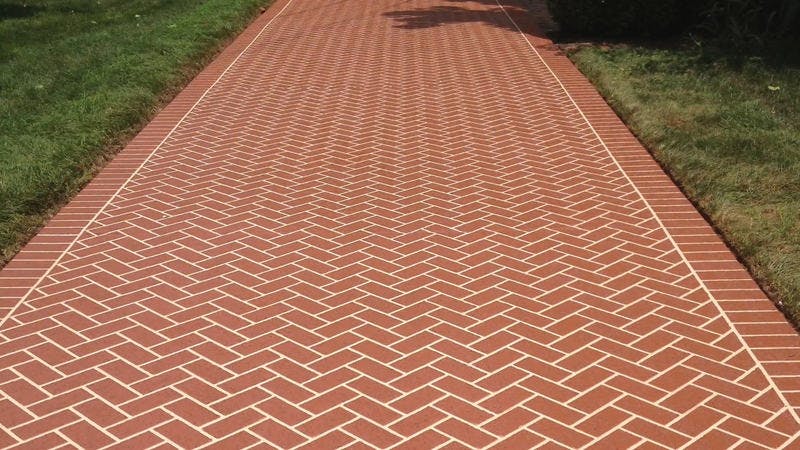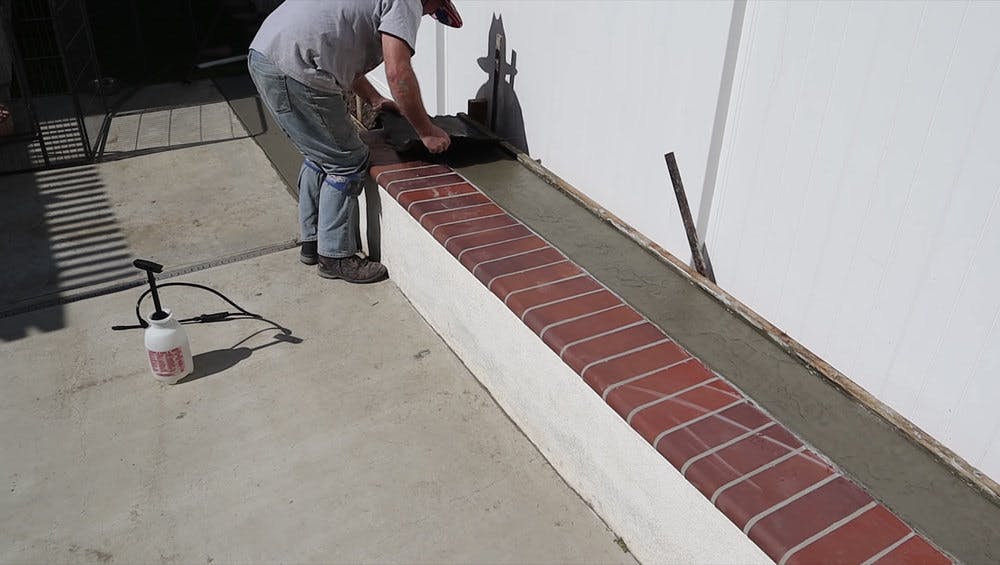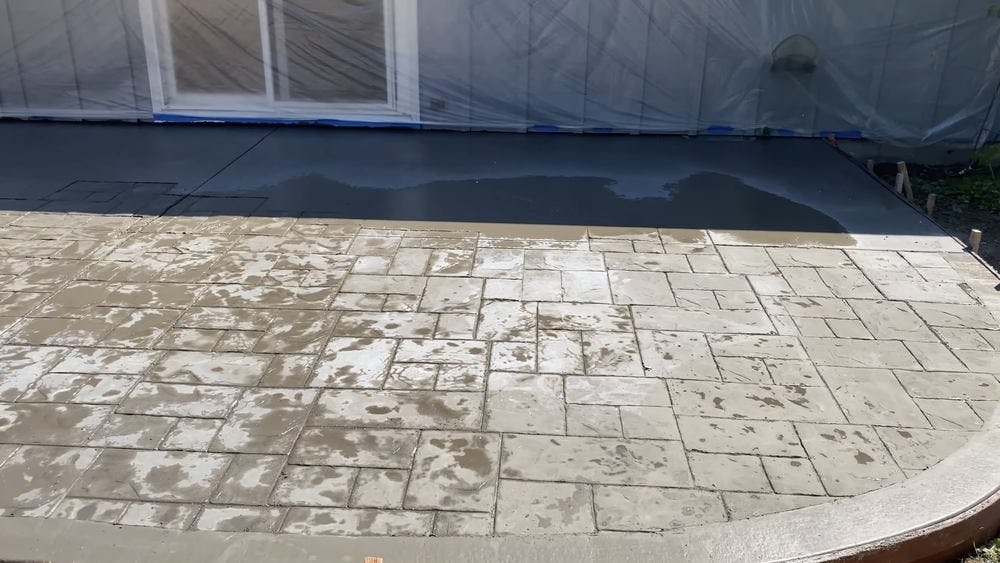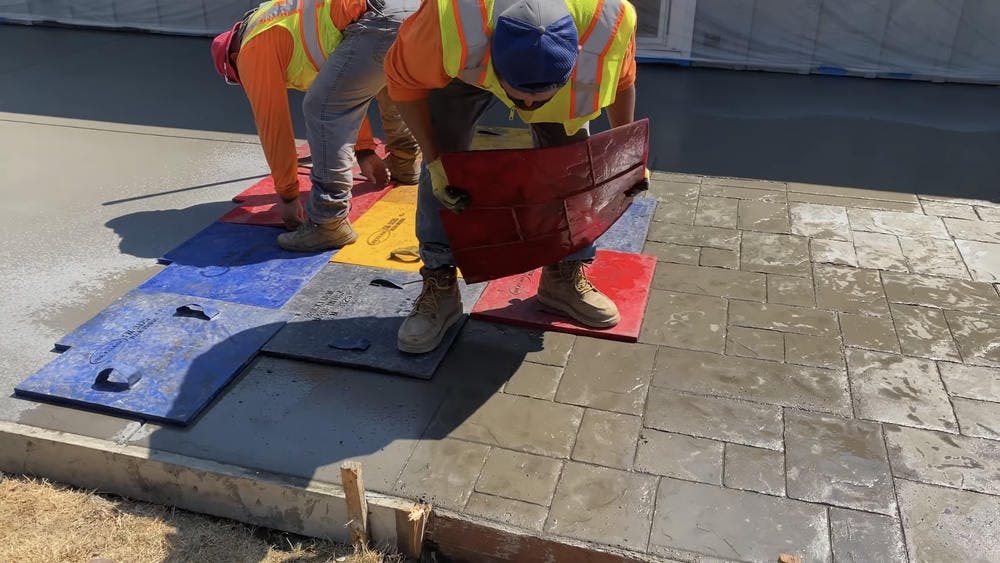Get stamped concrete the right way from the pros in Orange County, CA
Can I do stamped concrete myself?
If you're considering stamped concrete for your upcoming project, you might be wondering if it's something you can tackle yourself. Well, let's delve into it! While some ambitious individuals may attempt a DIY approach to stamped concrete, it's essential to understand the complexities involved. Achieving professional-level results requires experience, specialized tools, and expertise in concrete placement and stamping techniques. Additionally, mistakes during the process can be costly to rectify. It's generally recommended to hire a skilled and reputable contractor for stamped concrete projects. They have the knowledge and resources to ensure proper surface preparation, precise stamp placement, and quality finishing. By entrusting the job to professionals, you can have peace of mind knowing that your stamped concrete will be expertly executed, enhancing the beauty and value of your space.
Can you stamp concrete over existing concrete?
Ah, the question of whether you can stamp concrete over existing concrete is a common one. Let's dive into it! The possibility of stamping over existing concrete largely depends on its condition and stability. If the existing concrete is structurally sound, free from major cracks or damage, and has a suitable surface for adhesion, it may be feasible to stamp over it. However, proper surface preparation, including cleaning, repairing any flaws, and applying a bonding agent, is crucial to ensure a successful outcome. It's essential to consult with a professional concrete contractor who can assess the condition of your existing concrete and provide expert advice on whether stamping is a viable option. They will consider factors like thickness, compatibility of materials, and the desired stamping design to determine the best course of action.
Learn more about stamped concrete from our experts
Is stamped concrete outdated?
Is stamped concrete outdated? Absolutely not! In fact, stamped concrete continues to be a popular and versatile choice for homeowners looking to enhance their outdoor spaces. This durable and visually appealing material offers a wide range of benefits that make it far from outdated. This opens up a world of design possibilities, allowing homeowners to achieve the aesthetic they desire without breaking the bank. Plus, stamped concrete offers greater durability and longevity compared to some natural materials, making it a wise investment. Despite its many advantages, there are a few common myths surrounding stamped concrete that need debunking. Let's shed some light on them:
- Lack of Variety: Some may assume that stamped concrete only offers limited design options. However, this is far from true. With advancements in stamping techniques and a wide array of available patterns, colors, and textures, stamped concrete can replicate various materials and create unique and customized looks.
- Short Lifespan: Another myth suggests that stamped concrete is prone to cracking and fading over time. However, when properly installed and maintained, stamped concrete can last for decades. Regular sealing and maintenance, along with proper installation techniques, can significantly prolong its lifespan.
- Slippery Surface: Concerns about the slipperiness of stamped concrete are often raised. However, just like any other outdoor surface, stamped concrete can be enhanced with anti-slip additives or a textured finish to ensure safe footing, even in wet conditions.
- Costly Maintenance: Some may believe that maintaining stamped concrete is expensive and time-consuming. In reality, routine cleaning and occasional resealing are typically all that's required to keep stamped concrete looking its best. These maintenance tasks are relatively simple and cost-effective.
How do you prepare ground for stamped concrete?
When it comes to installing stamped concrete, proper preparation of the ground is crucial for achieving a durable and visually appealing result. So, how do you prepare the ground for stamped concrete? Here is our a step-by-step process:
- Clear the Area: Our first step is to clear the area of any rocks, debris, or vegetation. This ensures a clean and level surface for the concrete.
- Excavate the Site: Excavate the ground to the desired depth, taking into account the thickness of the concrete and any additional layers like gravel or sand. The depth will depend on factors such as the soil conditions and the intended use of the concrete.
- Establish Proper Sloping and Drainage: Ensure that the excavated area has proper slope and drainage to prevent water accumulation. This is important for minimizing the risk of water damage and improving the longevity of the stamped concrete.
- Compact the Soil: Use a compactor or plate tamper to compact the soil thoroughly. This step helps to stabilize the ground and prevent future settlement, which could lead to cracks or unevenness in the concrete.
- Install a Base Material: Lay a base material like gravel or crushed stone to create a stable and even surface for the concrete. This layer also aids in proper drainage.
- Add Reinforcement: Depending on the size and intended use of the stamped concrete, consider adding reinforcement such as steel rebar or wire mesh. This helps to strengthen the concrete and prevent cracking.
- Form the Edges: Install sturdy forms along the edges of the designated area to contain the concrete and create clean, defined edges. Ensure the forms are level and securely in place.
- Prepare for Concrete Pouring: Before pouring the concrete, dampen the base material and forms with water. This helps to prevent rapid moisture loss from the concrete, ensuring proper curing.
How long after pouring concrete can you stamp it?
When it comes to stamped concrete, timing is everything. Typically, you'll need to wait until the concrete has partially hardened but is still soft enough to make an impression. This phase is commonly referred to as the "plastic state" of the concrete. It's essential to avoid stamping too early when the concrete is too wet and prone to damage, or too late when it has fully cured and cannot be imprinted.
The timing can vary based on the specific mix and weather conditions, but a rough guideline is to wait around 4-8 hours after pouring the concrete before attempting to stamp it. This timeframe allows the concrete to firm up and gain enough strength while remaining workable for the stamping process.
However, it's important to note that the exact timing may vary depending on factors like temperature, humidity, and the specific product recommendations. It's always best to consult with a professional contractor or follow the instructions provided by the stamping system manufacturer to ensure you achieve the optimal results.
Remember, patience is key when it comes to stamped concrete. Waiting for the right moment to stamp ensures that you achieve crisp and well-defined patterns that enhance the beauty of your concrete surface.



